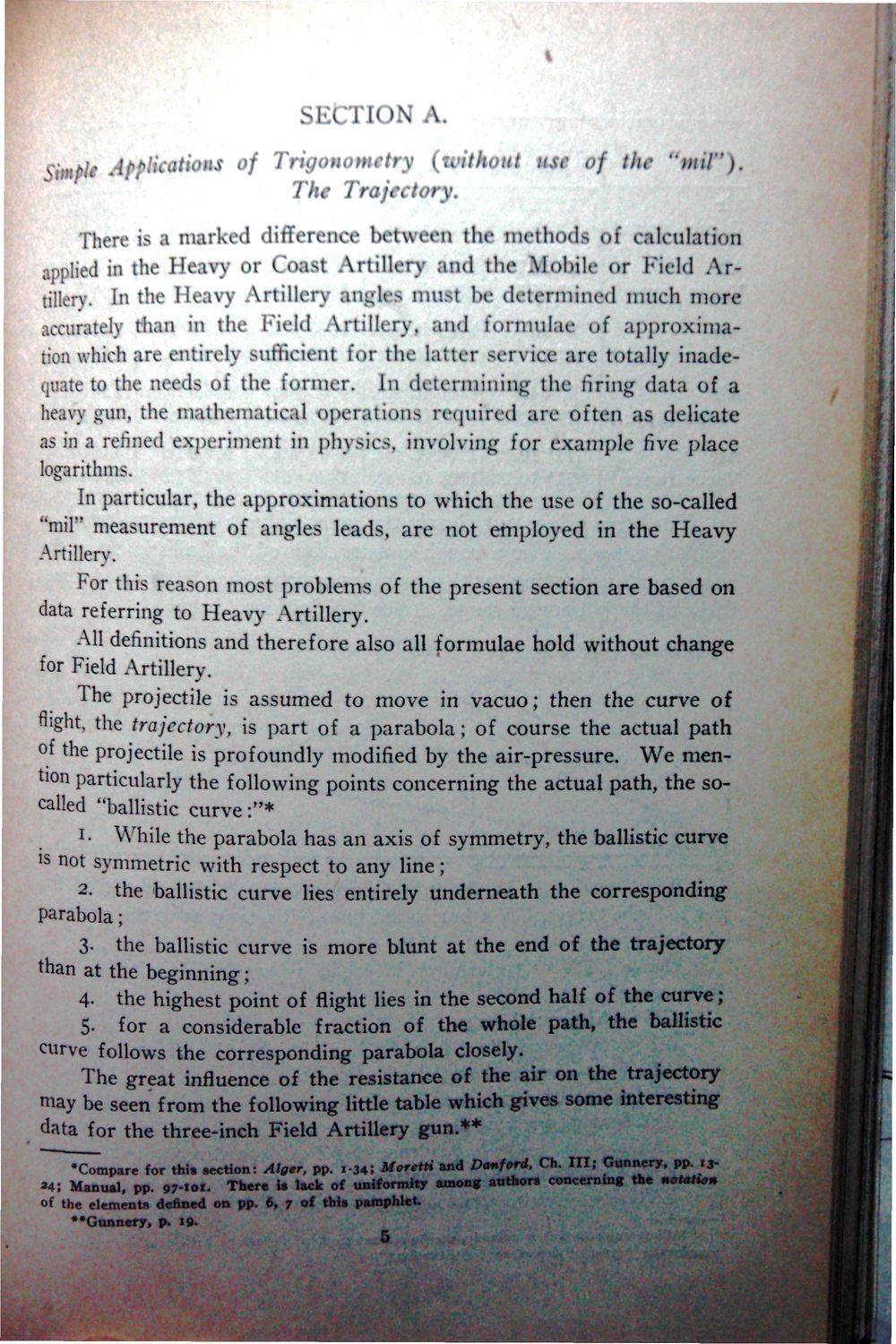| |
| |
Caption: War Publications - WWI Compilation 1923 - Article 46
This is a reduced-resolution page image for fast online browsing.

EXTRACTED TEXT FROM PAGE:
1 SECTION A. Simple Applications of Trigonometry (without use of the "mil"). The Trajectory. There is a marked difference between the methods of calculation applied in the Heavy or Coast Artillery and the Mobile or Field Artillery. In the Heavy Artillery ingles nutst he determined much more accurately than in ihe Field Artillery, and formulae of approximation which arc entirely sufficient for the latter service are totally inadequate to the needs of the former. In determining the firing data of a heavy gun, the mathematical operations required are often as delicate IS in a refined experiment in physics, involving for example five place logarithms. In particular, the approximations to which the use of the so-called "mil" measurement of angles leads, are not employed in the Heavy Artillery. For this reason most problems of the present section are based on data referring to Heavy Artillery. All definitions and therefore also all formulae hold without change for Field Artillery. The projectile is assumed to move in vacuo; then the curve of night, the trajectory, is part of a parabola; of course the actual path of the projectile is profoundly modified by the air-pressure. We mention particularly the following points concerning the actual path, the socalled "ballistic curve: * i. While the parabola has an axis of symmetry, the ballistic curve J s not symmetric with respect to any line; 2. the ballistic curve lies entirely underneath the corresponding parabola; 3- the ballistic curve is more blunt at the end of the trajectory than at the beginning; 4- the highest point of flight lies in the second half of the curve; 5- for a considerable fraction of the whole path, the ballistic curve follows the corresponding parabola closely. The great influence of the resistance of the air on the trajectory may be seen from the following little table which gives some interesting data for the three-inch Field Artillery gun.** •Compare for this action: Algtr, pp. I-MI MarrtH and Danford, Ch. I l l ; Gunnery, pp i j Manual, pp. 97-101. There it lack of uniformity among author! concerning the notation he element* defined on pp. 6, 7 of this pamphlet ••Gunnery, p. 19. 5
| |